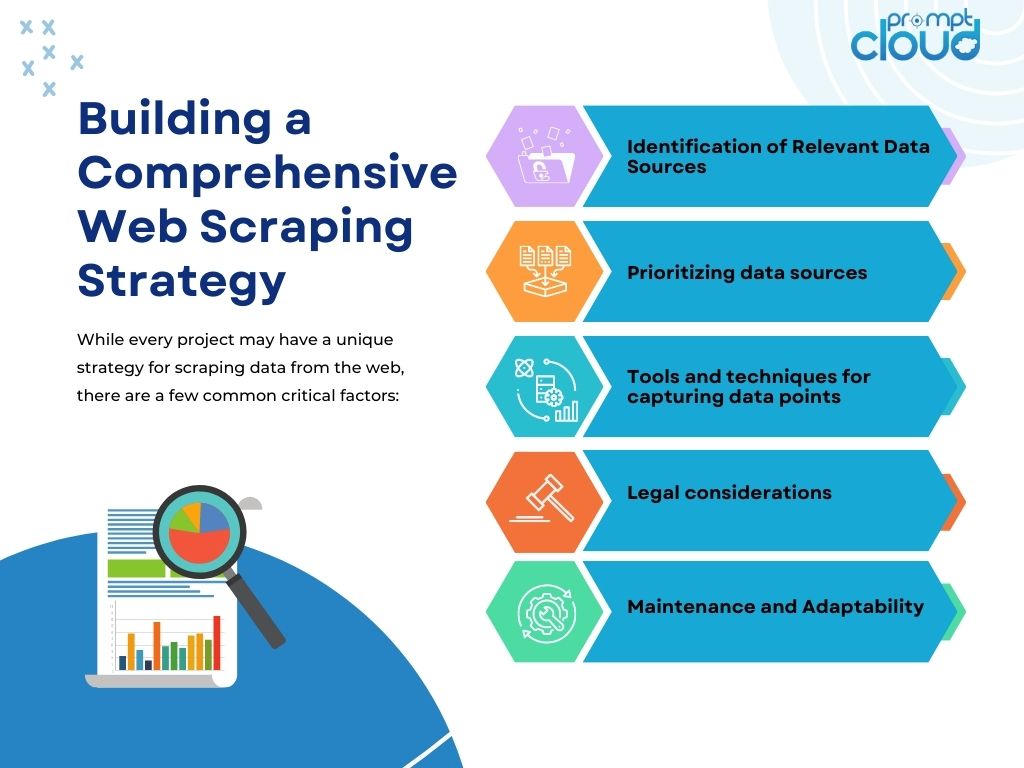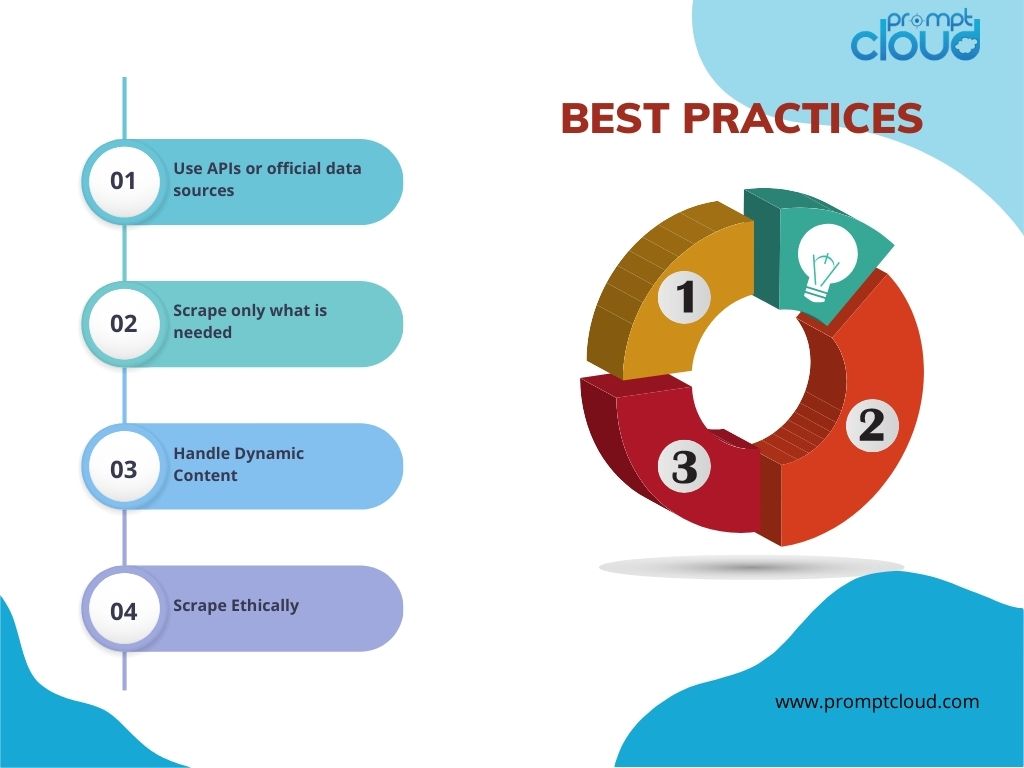
Scraping data at an enterprise level requires one to touch base on multiple facets. Without a comprehensive strategy in place, things can go wrong at any point in time. Your project may run into legal issues due to non-compliance with the laws of certain regions, the data sources you were scraping from, may end up sending inaccurate data, and there’s a possibility that websites change their user interface frequently causing your system to fail repeatedly. Scraping data without a comprehensive web scraping strategy is like playing football without having a game plan.
Parts and Parcels of a Comprehensive Web Scraping Strategy
While every project may have a unique strategy for scraping data from the web, there are a few common critical factors:

- Identification of Relevant Data Sources- When building web scraping projects, it is easy to get lost in the innumerable things that need to be taken care of, but ensuring you get the right data source is critical. Even before you go about deciding on the tool, or building anything worthwhile, you will need to make a list of all the data sources, get them evaluated by business analysts or scraping experts, verify the accuracy of data from each source, and figure out which data points are present and which ones are missing.
- Prioritizing data sources- You cannot go live with all data sources at once. Adding new data sources to your web scraping framework is a continuous process. You can aim for the low-hanging fruit– the easiest websites first. If there’s a specific website that will be the source of your core data stream, you could aim for it as well. Additional data streams can be added with time from newer and more “complex to scrape” websites.
- Tools and techniques for capturing data points- Depending on the tool that you use for capturing data points from different websites, your strategy and planning may also change slightly. Professionals trying their hand at web scraping may prefer DIY tools, or coding their scrapers in languages like Python. On the other hand, corporates may prefer DaaS providers like PromptCloud. Depending on the tool or web scraping service you choose, you will have to figure out how to capture all the data points that you need from each website. Those with tabular or structured data may be easier to handle compared to ones where the data points are stored within the raw text. Based on the maturity of the tool you use, you will need further steps for cleaning, formatting, or normalizing the data, before you can store it in a database.
- Legal considerations- Starting with CCPA and GDPR, data-privacy laws across the globe have been getting stricter especially when it concerns data related to individuals. It would be vital to be aware of and adhere to the laws of whichever country you are running your project in as well as the laws of other countries from which you are scraping data. While there is some ambiguity when it comes to web scraping, using the help of seasoned DaaS solutions helps overcome legal hurdles.
- Maintenance and Adaptability- Building a web scraping service or scraping solution is only half the battle won. Unless it is easy to update and maintain, it may become useless in a short while.UI changes of source websites or new security protocols may require you to change the way you scrape data. Based on the number of websites you scrape from, your code base may need frequent changes. It would be worthwhile to have an alarm-based system to send updates whenever your scraper cannot fetch data from a particular website.
- Risk Mitigation- IP rotation, respecting robot.txt files, and ensuring you adhere to the rules of a webpage behind a login page are minor acts that go a long way in mitigating risks associated with web scraping. A comprehensive web scraping strategy should have a list of such actions that need to be adhered to at all times to reduce litigation.
- Cost- Based on the scale in which you want to scrape data, and the frequency in which you want to run your crawlers, you may have to decide on which tool suits you best. For one-time web scraping requirements, DIY tools may come cheap, but for enterprise solutions, cloud-based DaaS providers that charge based on usage can be more efficient in the long run.
Best Practices
The factors mentioned above are a must-have for your web scraping strategy. But there are also some “great-to-have” best practices that you can include if you want your web scraping project to be one that will be followed as a case study by those working on similar problems in the future –

- Use APIs or official data sources– Web Scraping may not be needed for certain cases where official APIs exist. These data streams are likely to be clean and secure. Use them whenever available instead of always jumping on your scraping gun.
- Scrape only what is needed- If you scrape too much data, the costs associated with data scraping, transfer, processing, and storage, will all increase. Scraping what you need is also an ethical scraping approach and will ensure that you do not get into legal hassles over data that you did not need or use in the first place.
- Handle Dynamic Content- Websites today use Javascript or AJAX to generate content on the fly. Some of these may take time to render. Ensure the tool you choose or build can handle such use cases so that you can scrape data from a wider range of websites.
- Scrape Ethically- Bombarding websites with requests such that it affects their organic traffic is both ethically and legally wrong. Any practice that harms the source website shouldn’t be undertaken– you do not want to kill the goose that lays the golden eggs.
Building your own enterprise-grade web scraping solution may take a lot of time and resources. Also in case you have a business problem that needs data to be resolved, it may divert your attention from the real problem. This is why our team at PromptCloud offers an on-demand DaaS solution that fits the bill for both large corporations as well as startups that want to enable data-backed decision-making as part of their business workflow.


















